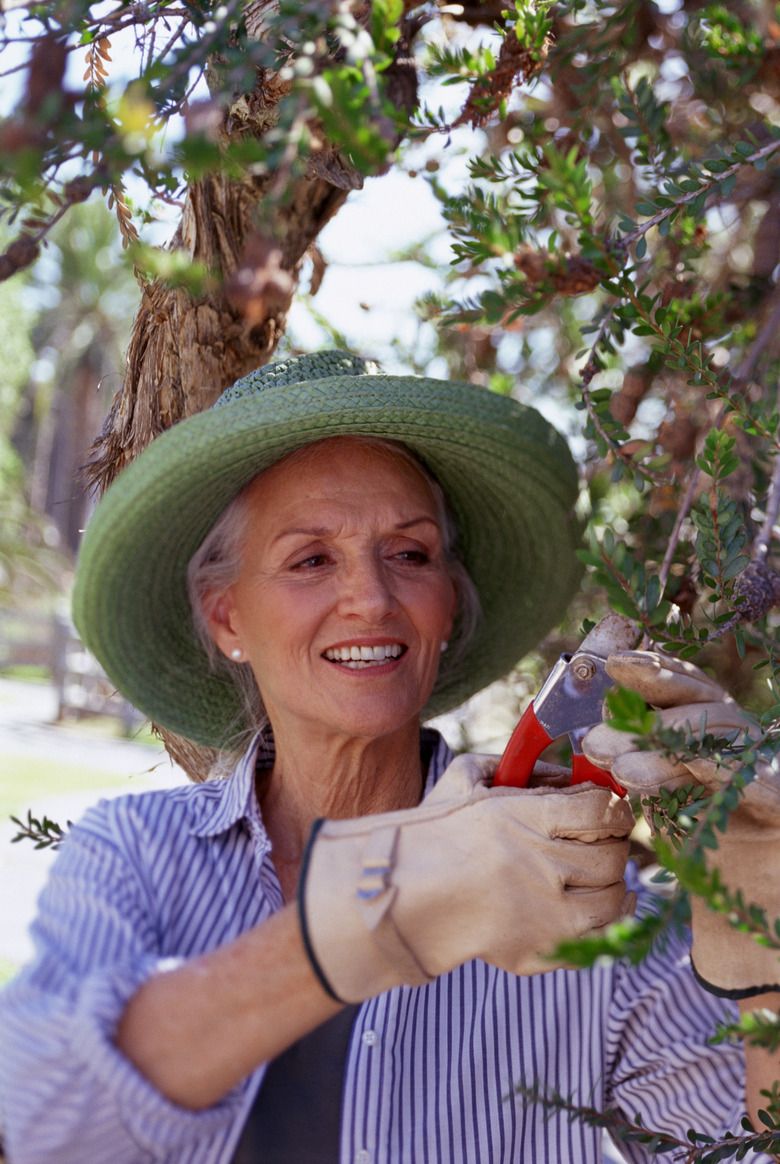How To Prune Pieris Japonica
Pieris japonica, commonly known as lily-of-the-valley bush, Japanese andromeda or Japanese pieris, is a round, compact evergreen shrub that grows in U.S. Department of Agriculture plant hardiness zones 4 to 8. Japanese pieris produces attractive, bell-shaped white or pink flowers that hang in clusters of 6-inch chains in early winter or late spring. Native to Japan, Taiwan and Eastern China, Japanese pieris grows up to 12 feet tall and 10 feet wide. An annual pruning keeps Japanese pieris healthy and blooming.
Step 1
Step 1
Pull off wilted or spent blooms with your fingers at the base of the flower stem where it meets the branch in mid to late spring, after flowering. This process, called deadheading, conserves the plant's energy, which would have otherwise been used to develop seeds and seedpods. Always wear protective gloves when pruning.
- Pieris japonica, commonly known as lily-of-the-valley bush, Japanese andromeda or Japanese pieris, is a round, compact evergreen shrub that grows in U.S. Department of Agriculture plant hardiness zones 4 to 8.
- Pull off wilted or spent blooms with your fingers at the base of the flower stem where it meets the branch in mid to late spring, after flowering.
Step 2
Step 2
Cut off any frost-damaged or diseased branches routinely with your garden pruner, removing as much as necessary to clear any damage. To make a cut, carefully place your garden pruner at the junction of healthy stem and diseased one, and snip forcefully. This increases air flow, reduces disease and rejuvenates new growth, which increases flower production.
Step 3
Step 3
Cut back overlong stems to improve the shape of overgrown Japanese pieris. Make one cut at a time, severing the branch where it is stronger and lower down, so that it blends back in with the shape of the plant.
Step 4
Step 4
Remove one-third of the oldest wood with garden pruners once per year. Generally, the oldest wood can be identified as branches that are thick, leafless and inward-growing. This process, called thinning, stimulates new, better-flowering growth from the base of Japanese pieris.
- Cut off any frost-damaged or diseased branches routinely with your garden pruner, removing as much as necessary to clear any damage.
- Make one cut at a time, severing the branch where it is stronger and lower down, so that it blends back in with the shape of the plant.
Tip
Over time, Japanese pieris can become woody, with many dead branches and few flowers. If your Japanese pieris is overly woody, replacement may be the best option.
Tip
In general, it is best to keep pruning to a minimum.
Tip
Overgrown or neglected Japanese pieris respond well to heavy pruning.
Warning
Japanese pieris can be harmful, even fatal, if ingested by pets or children.
Things Needed
- Garden pruner
- Gardening gloves
